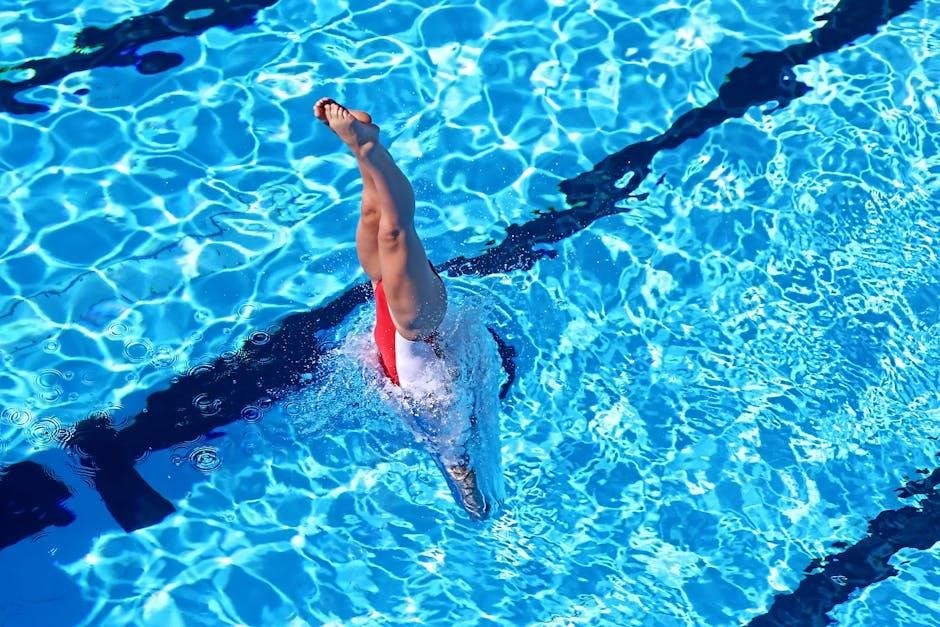Discover the perfect fit for your next swim with our comprehensive guide to bathing suit sizing. Explore expert tips, size charts, and tools to ensure a confident and comfortable fit for all body types and needs. Learn how to measure accurately, understand size variations across brands, and find the ideal style that suits your preferences. Whether you’re shopping for bikinis, one-pieces, or plus-size options, this guide will help you navigate the world of swimwear with ease. Use our swimsuit size calculator and care tips to maintain your suit’s quality and fit over time.
Understanding the Importance of Proper Fit
A well-fitting bathing suit is essential for comfort, confidence, and performance in and out of the water. Proper fit ensures optimal support, eliminates unwanted gaps or tight spots, and enhances mobility. Whether swimming laps or lounging by the pool, the right fit prevents discomfort and allows you to enjoy your activities without restriction. A suit that fits correctly also lasts longer, maintaining its shape and quality over time. By prioritizing proper fit, you can enhance your overall swimming experience and ensure a flattering, supportive suit that meets your needs.
Key Measurements for Accurate Sizing
Accurate sizing requires measuring your bust, waist, hips, and torso. These measurements ensure a flattering, supportive fit tailored to your body shape and swimwear style.
Bust, Waist, Hips, and Torso Measurements
Accurate measurements are key to finding the perfect fit. Measure your bust around the fullest part, keeping the tape horizontal. For the waist, measure the narrowest point, and for hips, around the widest part. Torso length, from the base of the neck to the hipbone, is crucial for one-piece suits. These measurements guide your size selection across styles, ensuring comfort and support. Use a flexible tape measure and consider having someone assist for precision. Proper sizing enhances both the fit and confidence in your swimwear choice.
How Bathing Suit Styles Affect Sizing
Different styles like one-piece, bikini, or tankini impact fit. One-piece suits require accurate torso measurements, while bikinis offer mix-and-match sizing. High-waisted styles may alter hip measurements, ensuring a flattering fit for various body types and preferences.
One-Piece, Bikinis, and Other Styles
One-piece suits require precise torso and hip measurements for a snug fit, while bikinis offer flexibility with separate top and bottom sizing. Tankinis and high-waisted styles provide additional coverage, altering fit around the waist and hips. Each style caters to different body types, ensuring comfort and confidence. Understanding these differences helps in selecting the perfect suit that flatters your figure and meets your needs. Always refer to brand-specific charts, as sizing can vary slightly between styles and designs. Mixing and matching bikini sizes can also create a personalized fit, enhancing both support and aesthetics.
The Role of Bra Size in Swimsuits
Your bra size plays a crucial role in ensuring optimal support and comfort in swimsuits. Properly matching your bra size to your swimsuit cup size enhances fit and confidence, offering the right level of support tailored to your needs, whether it’s for swimming laps or lounging by the pool. Accurate sizing ensures a secure and flattering fit, making your swimwear experience more enjoyable and stress-free. Use the provided swimsuit cup size chart to find your perfect match and enjoy the best possible support in your swimwear.
Matching Your Bra Size for Optimal Support
Matching your bra size to your swimsuit cup size ensures optimal support and comfort. Use a swimsuit cup size chart to align your bra cup size with the swimsuit’s offerings. For example, if your bra size is a C, look for a swimsuit with a C cup to maintain proper fit and support. This alignment prevents gapping or tightness, providing a secure and flattering fit. Proper sizing enhances comfort during activities like swimming or lounging, ensuring confidence and freedom of movement. Accurate bra size matching is essential for a supportive and enjoyable swimwear experience.

Using a Swimsuit Size Calculator
A swimsuit size calculator helps determine your ideal fit by inputting measurements like bust and hips, providing a personalized size recommendation for accuracy and ease.
Online Tools for Personalized Fit
Online tools like swimsuit size calculators simplify finding your perfect fit. By inputting measurements such as bust, waist, and hips, these tools provide tailored size recommendations. Many brands offer interactive guides, ensuring accuracy and ease. Some calculators cater to specific needs, like plus-size or athletic fits. They often account for style differences, such as bikini separates or one-piece suits. To get the most accurate results, measure yourself carefully and consider the brand’s sizing chart. These tools save time and reduce guesswork, helping you find a swimsuit that flatters your body and meets your lifestyle needs. They’re a modern solution for a confident fit.

Brand-Specific Size Variations
Brands often have unique size charts, so your size may vary between labels. Always check the specific brand’s guide for accurate fitting and optimal comfort.
How Different Brands Differ
Each brand tailors its sizing to specific fits, such as compressive, relaxed, or form-fitting. Some focus on performance, like TYR’s triathlon lines, offering varying compression levels. Others cater to diverse body types, with plus-size options ranging from size 14 to 34. international sizing systems guide measurements, but brands may adjust for style. Always refer to a brand’s size chart, as variations can lead to different fits. Reading reviews and understanding a brand’s design philosophy helps choose the best option for your needs, ensuring both comfort and confidence.

Factors Influencing Fit Beyond Size
Beyond size, compression, fabric type, and activity level impact fit. Compression offers a snug feel, while fabric breathability and elasticity enhance comfort. Activity level determines support needs, ensuring optimal performance and comfort.
Compression, Fabric, and Activity Level
Compression, fabric type, and activity level significantly impact bathing suit fit. Compression offers varying levels of snugness, from light to super compressive, catering to different performance needs. Fabric choice affects comfort, durability, and flexibility, with options like breathable, quick-drying materials. Activity level determines required features, such as enhanced support for high-intensity sports or relaxed fits for leisure. Combining these factors ensures optimal comfort and functionality, whether swimming laps or lounging by the pool. Understanding these elements helps tailor your choice to your lifestyle and preferences, ensuring a perfect blend of fit and performance.

Measuring Yourself for the Best Fit
Use a tape measure to accurately measure your bust, waist, hips, and torso. Keep the tape horizontal and not too tight for precise sizing. This ensures the best fit.
A Step-by-Step Guide
Start by gathering a flexible tape measure and stand up straight. Measure your bust at the fullest point, keeping the tape horizontal. Next, measure your natural waistline, the narrowest part of your torso. Then, measure your hips at their widest point, typically 7-9 inches below your waist. For one-piece suits, measure your torso length from the base of your neck to your hipbone. Ensure the tape isn’t too tight or loose. Use these measurements to compare with size charts provided by brands. Double-check for accuracy, and consider asking someone to help for precise results. This will ensure the best fit for your bathing suit.

Plus-Size Bathing Suit Options
Plus-size bathing suits offer stylish and supportive options for sizes 14-34. Look for brands with tailored fits, adjustable features, and size charts to ensure comfort and confidence perfectly.
Guides and Tips for Plus Sizes
For plus-size bathingsuits, focus on styles that flatter your figure, such as high-waisted bikinis or one-pieces with supportive features. Choose sizes ranging from 14 to 34, ensuring a snug yet comfortable fit. Adjust straps for optimal support and consider suits with underwire for added structure. Torso length is crucial—opt for longer styles if you have a taller frame. Consult size charts and read reviews to find brands offering inclusive fits. Look for stretchy, breathable fabrics that hug curves without constriction. Pair with cover-ups or accessories to enhance your look and confidence by the water. Proper fit ensures both style and comfort.
Common Fit Issues and Solutions
Address gaps and tight spots by ensuring proper measurements. Adjust styles for body type—high-waisted for curvier figures, underwire for bust support. Opt for adjustable straps and seamless fabrics to minimize discomfort. Choose suits with compression for a snug feel. Consider brands offering customizable fits. If too tight, size up; if too loose, opt for supportive details like ruching or drawstrings. Use size calculators to avoid sizing mismatches. Proper fit ensures comfort and confidence.
Addressing Gaps and Tight Spots
Resolving fit issues is crucial for comfort and confidence. If your swimsuit has gaps, consider a smaller size or a style with ruching for a better fit. For tight spots, opt for a larger size or adjustable features like straps or drawstrings. High-waisted styles can help minimize gaps around the waist, while seamless fabrics reduce digging. If the bust area is too tight, look for underwire or bra-sized options. For hips feeling constrained, try a suit with a wider cut or boyshorts. Proper fit ensures all-day comfort, whether swimming or lounging.

Caring for Your Bathing Suit
Proper care extends the life of your swimsuit. Hand wash with mild detergent, avoid machines, and dry flat to prevent stretching. Rinse after use to remove chlorine or salt, and store in a cool, dry place to maintain elasticity and color vibrancy. Regular care ensures your suit stays comfortable and retains its shape for seasons to come.
Maintaining Fit and Quality
To preserve your swimsuit’s fit and quality, adopt a gentle care routine. After each use, rinse it with cool water to remove chlorine, salt, or sunscreen residues. Avoid machine washing; instead, hand wash with mild detergent. Gently squeeze out excess water without wringing, and lay it flat to dry away from direct sunlight. This prevents stretching, fading, and damage to the fabric. Store your suit in a cool, dry place to maintain elasticity and color vibrancy. Regular care ensures your swimsuit remains comfortable and looks great for seasons to come.
